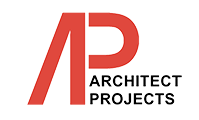Beauty is in the eye of the beholder

Beauty is a subjective concept that changes over time. Just like the evolution of fashion – from the dazzling colour of the swinging sixties to the “normcore” trend sweeping today’s fashion industry – the idea of what is considered aesthetic and beautiful in architecture and design is constantly evolving.
And, as Aesop’s fable goes, beauty is very much in the eye of the beholder – it is not a singular concept.
This is especially true when it comes to designing our homes and public realm. The places and spaces where we spend our free time have to be designed to improve the quality of life for people. And for this, beauty is more than just aestheticism or neo-classical Georgian façades. Instead, it is about taking a holistic approach and focusing on placemaking.
Functionality, flexibility, and adaptability in design are key to creating spaces that foster communities, as well as providing high-quality homes that people actually want and align with their needs.
According to Santander’s recent first-time buyer study, people are least willing to give up proximity to public transport, a local community feel, travel links to friends or family, and reception or living rooms.
Clearly, the everyday aspects of where people live are far more important than whether their house looks like a mock Tudor mansion or if they live on a street plucked from an ITV period drama.
As architects and designers, we should all look to embrace these concepts of practicality and adaptability when defining beauty for comfortable and homely spaces. This means providing good transport links, biophilic design to improve mental wellbeing and reduce pollution, a central area for the local community to gather, and places that are designed to withstand both the uncomfortable heat of the summer and the wind-blown nights of the winter freeze.
This is particularly key when designing the public realm. Our high streets, town centres and local neighbourhoods have to be inclusive and welcoming to allow for a natural community to develop. Between green spaces to walk the dog and local cafés for weekly brunches, it’s these functional but well-designed elements that can bring life into an area.
It’s a virtuous cycle: if we can create great homes and an innate sense of social value, then beauty will follow.
Ultimately, it’s true that high-quality design and placemaking do require a concept of beauty, but we cannot forget that part of what makes a place beautiful is its functionality, flexibility and social value.
If we want to think seriously about how to build better homes, we need to create places that bring people into central areas and connect us back to nature, while providing a quality product that will foster thriving communities for years to come.

